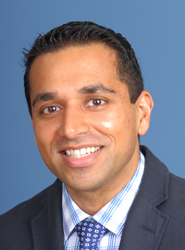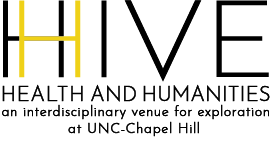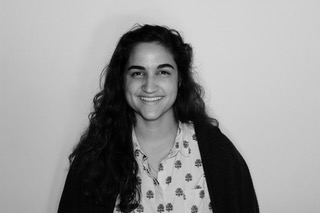By: Tori Placentra
For Dr. Raj Telhan, the epitome of the meaning of Health Humanities can be found in the anatomical sketches of Andreas Vesalius and Frank Netter. Vesalius, a sixteenth century anatomist and physician tended to draw the human form in its entirety, immersed in natural surroundings while Netter, a twentieth century surgeon and illustrator, depicts truncated images, faceless and isolated against a white background.
These juxtaposed images were displayed behind Dr. Telhan as he sat, relaxed, in his well fitted gray suit, surrounded by the walls of books in the HHIVE (Health and Humanities: An Interdisciplinary Venue for Exploration). The occupants of the room leaned forward in their seats, entranced, as he continued, deftly seaming together the outwardly disparate vocabularies of medicine and the humanities – talking about technical anatomy and quoting Ralph Waldo Emerson in the same breath.
Telhan says that knitting this seam between the technical and the moral, and “[discovering] how to make the two speak to one another” is essential to placing the “exigencies of medical education” in a human context. Having studied English Language and Literature as an undergraduate and then earning a dual degree in Medicine (M.D.) and creative writing (M.A.) all from The University of Virginia (UVA), Telhan is uniquely equipped in merging these intellectual spheres.
This deliberate search for a balance can be seen in Telhan himself and his writing. When he explains the need for humanities in medicine, he first speaks about medical history rather than clinical data. This is a surprising response from a doctor who was Chief Resident at New York Presbyterian Hospital-Columbia/Cornell Medical center, trained at Memorial Sloan Kettering Cancer Center, and completed a fellowship in Interventional Spine Medicine at UVA. In his beautiful and chilling essay “Begin Cutting,” Telhan grapples with humanizing the graphic, but necessary, nature of anatomy lab; every sentence walking the line between Vesalius and Netter. This amalgamation of perspectives was evident even as he delivered his talk in the HHIVE. For example, three minutes into his talk, his pager went off, he paused to check it, and then continued on about Aristotelian cosmology, as though nothing had happened, as though the two were in no way unrelated.
With mentors from across academic and professional realms Telhan has cultivated the ability to communicate articulately on a broad spectrum of topics, staying “true to [his] original drives” but learning to improvise along the way. Now an Assistant Professor in The University of North Carolina at Chapel Hill’s Department of Physical Medicine and Rehabilitation, Telhan is carving his own role as a mentor. In his teaching and clinical practice and by performing grand rounds, he is finding interdisciplinary spaces in which to discuss the importance of medical humanities. He says “studying the humanities essentially gives us ways of living in the world that are morally and aesthetically richer than they might otherwise be” and places “clinical encounters in a frame beyond the purely medical,” which opens up insights into therapies and treatments that might have otherwise been invisible.
The future of medical humanities lies in people like Dr. Telhan. He is an individual whose thinking intersects medicine, literature, and philosophy. Finding balance between the philosophies embodied in the sketches of Vesalius and Netter will always be “essential in our struggle as patients and physicians to come to terms with the phenomena of conception, aging, illness, suffering, disability, and death.” For those with a conviction to walking that path, intertwining medicine and the humanities, the path to do so does, indeed, exist.


